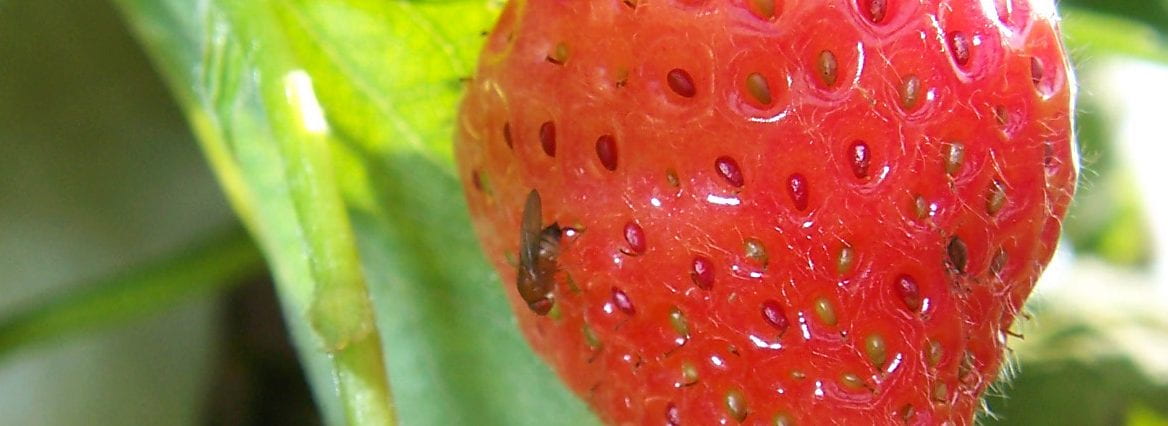The first two female SWD of the 2014 growing season were captured over the week of July 3 to 9 in traps monitored by Faruque Zaman, Long Island Horticultural Research and Extension Center, Suffolk County Cornell Cooperative Extension in a yeast-baited trap at a ripening raspberry location in eastern Long Island.
On July 9, examination of 40 fruits found 2 SWD-infested raspberries with egg-laying sites at that location. The raspberry field is surrounded by grapes on one side and blackberries on the other side; no adjacent forest boundaries. No SWD have been captured in traps placed in other locations in Suffolk County, including blueberry, blackberry, grape, forest and a second raspberry site and no fruit infestation was found in raspberries collected from the second site.
At this time the SWD population appears to be very low. Therefore, cultural practices such as harvesting fruits frequently and removing rotten fruits from the field will help keep the SWD population down. Also, remove alternate weed hosts, pokeweed and bittersweet nightshade, from the area before these weeds develop fruit. SWD populations and damage can increase dramatically with favorable weather and susceptible ripe fruits. Insecticide applications are necessary when SWD populations are high. Insecticide control requires frequent applications (5-7 day interval), so delay onset of spraying until sustained captures occur in your area to maximize the utility of the applied materials.



